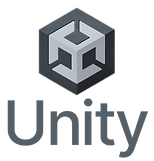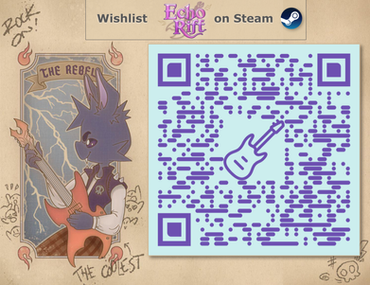Echo Rift
Fight enemies to the beat and bring Rock to the people in this epic rhythm game! Echo Rift is a beat-based combat game where players dance on an arena grid in their fight against the audiocratic elite to bring back music to a silenced world.
Project Type
Graduate Thesis Game - 25 person team
Date
August 2024 - May 2025
Roles
Game Design
Link



My Role
My role on Echo Rift was listed as Level Design. But I also spent a lot of my time as what I would describe as the vision holder or associate producer. The original game pitch shifted greatly after our prototyping phase, and it felt like there was confusion amongst the team about what our game was actually going to be. I strived to make sure everyone was on the same page by following up on team lead and producer meetings, then talking with individual team members. I felt that my efforts were helpful due to my documentation on Lark, which allowed our developers to ask the right questions to each other instead of working in solitude.
As a Level Designer, I spent many hours crafting attack patterns for our grid like damage system. I enjoyed being able to constantly playtest the levels myself and get other team members to playtest them so I could focus on polish. I worked with our team's other designers to shape the difficulty and progression systems of the game.
My Process
My process revolved around my main goal of helping to align our team to a cohesive vision and ensure that we could be proud of our final game as a short and polished experience. I was able to use all that I had learned from the past 6 years of Games classes and teaching to ask the right questions about why we were designing things the way they were. Understanding our audience and being able to shape our player experience to what we wanted was challenging.
Ideation
The original game pitch was essentially 'Tunic with music-based combat'. Since I had never played Tunic, I spent a few days playing through the game to understand the foundations of gameplay and the design.
After the prototype phase, I wrote various design documents on the Lark software and Jira tickets. I then used our prototype playtest feedback to create a game direction pitch based on the original game pitch that was later rejected for scope.
I met with producers and designers to collaborate on game direction. By understanding this, I was able to do research into what type of progression our game might need. I then created Lark ‘boards’ with breakdowns and flow charts of important foundational functionality.
Visual Polish
After being assigned to the Overworld team, I was tasked with the design constraints for a new mechanic proposal with these three pieces of information = Electric guitar (weapon), electricity (ammo), ranged (attack type). I spent time researching Tesla coils and sound waves produced by electricity to ensure that the puzzle would make sense visually and semi-realistically.
After my previous proposals were rejected, I was tasked with creating a new design document for the first boss enemy in the game and what types of attacks they would have. After doing so, I worked between teams to convey and clarify the Boss Game Design Document to help everyone be on the same page.
I experimented with different layouts, colors, textures, and sizes within the main boss arena to find what felt good. I updated the Boss GDD with the most up-to-date information about program logic within the flowchart and also ideated variations of attacks for each phase.
Game Assets
I learned how to use the Asperite program and its integration into our Unity Project.
Since there were other designers who would need to follow the same process, I wrote an extensive step-by-step guide on Pattern creation.
After playtesting and feedback, I reworked the first Boss attacks to updated versions that match the original design vision.
Level Design
After making dozens of Attack Sequences, I made a test scene with a sequence of patterns that was playtested by the design team.
I conducted playtests with 7 internal team members and 1 external team member on the game level 1.2, of which I had made a sequence of patterns for to determine difficulty, enjoyment, and length.
Based on the feedback, I made minor adjustments to some patterns, as well as the enemy health and player health. I worked with my fellow designer to get our levels prepared and ready to be put into final circulation.
At one point, our engineers were required to do a rework of our game's grid system and upgrade our engine to Unity 6. Due to this, I had to go back and update/fix all of my own patterns to incorporate into the new system.
I was in charge of Level 1.2 and 1.B1, and part of 1.1. The screenshot (right) below shows the attack sequence version one of 1.B1 or Act 1 Boss 1 (aka Lady Cawthorne). After getting the approval from the lead engineer, we merged our finalized playable levels to our main branch on GitHub and passed them off to the environment artists for set dressing.
Game Development
The final sprint was exciting and exhausting. As we attempted to get our game into a final state for launch, there were many tasks spread across the entire team. Some of the random things that I helped to do were as follows:
I helped to record gameplay for the Division of Games' Launch day and used Adobe Premiere to compile the art and Music to create our intro cutscene video of the game.
I worked on decorating the overworld map with assets and textures. I placed dozens of the modeler's assets and worked with engineer to ensure proper scripting of the character pathing and camera through the world.
I created the first draft of the Nintendo Switch landing page for our game in Unreal Engine 4 (right).
I created a custom QR code to bring to launch day to wishlist on Steam (right).
I created the first draft of our final one sheet for our wrap kit using assets from our artists in Adobe InDesign. I also rewrote the Steam razor and game description to align more with our gameplay and narrative, as well as provide a better hook statement for potential players.
Lastly, I volunteered to be on the University of Utah's Twitch stream to talk about our game during the Game Division’s launch day.
Post Mortem
One of the things that I am most grateful for was the chance to finally work with passionate developers who were dedicated to finishing our game until the very end. While there were many times where our passions conflicted with each other, it provided me with the opportunity to learn more soft skills. Many times, there were misunderstandings between Engineers and Designers, so I was grateful to have wonderful producers to help mediate the communication. I had to face some harsh realities of game development, such as rejected proposals. However, "the best teacher, failure is". So, I was able to learn and not let my passion for game development falter.
Echo Rift turned out to be something I am very proud of. Thanks to our team's dedication to polish and larger than usual size, we were able to make some of the best graduate games that the University of Utah Game's Division has produced.
Credits:
Unity
GitHub
Asperite
Substance Designer, Painter
Adobe Premiere, InDesign, Photoshop
Unreal Engine 4














